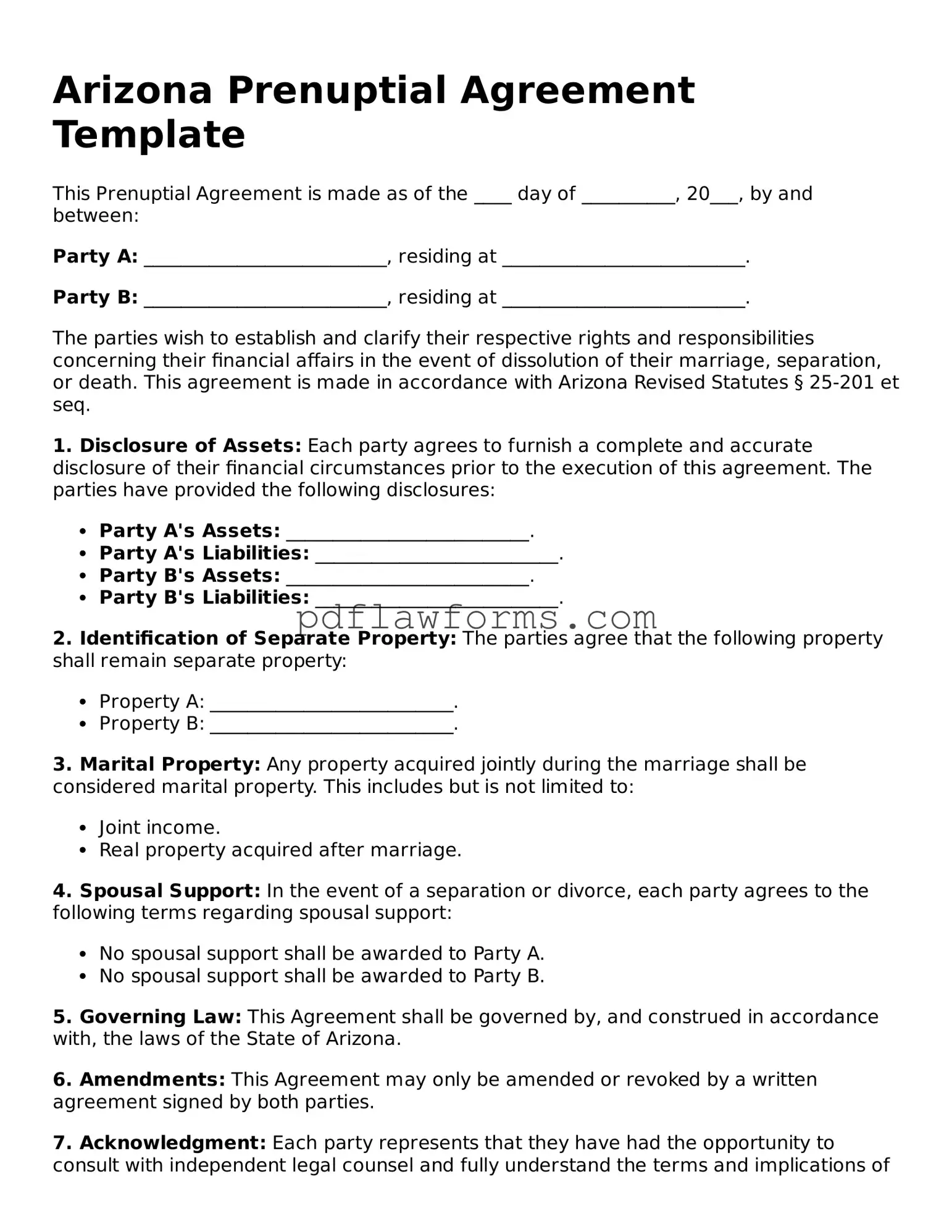When preparing a prenuptial agreement in Arizona, individuals often make several common mistakes that can lead to complications down the line. One significant error is failing to fully disclose all assets and debts. Transparency is crucial in a prenuptial agreement. If one party hides information, it could result in the agreement being challenged in court later.
Another frequent mistake is not having the agreement reviewed by a legal professional. While it may seem straightforward, the nuances of family law can be complex. A lawyer can help ensure that the document is valid and enforceable. Without this step, individuals risk creating an agreement that might not hold up under scrutiny.
Additionally, many people overlook the importance of considering future circumstances. A prenuptial agreement should account for potential changes in income, the birth of children, or other life events. Failing to include provisions for these scenarios can render the agreement less effective when it is most needed.
People also often neglect to sign the agreement well in advance of the wedding. Waiting until the last minute can create pressure and may lead to claims of coercion. It is advisable to finalize the agreement at least a few weeks before the wedding to allow both parties ample time to review and consider its terms.
Another common pitfall is using vague or ambiguous language. Clarity is essential in legal documents. If the terms of the agreement are not clearly defined, it can lead to misunderstandings or disputes later. Each provision should be straightforward and specific to avoid confusion.
Moreover, individuals sometimes forget to include a dispute resolution clause. This clause outlines how any disagreements regarding the agreement will be handled. Without it, parties may find themselves in lengthy and costly litigation if a conflict arises.
People may also mistakenly believe that a prenuptial agreement can address child custody and support issues. In Arizona, courts prioritize the best interests of the child, and any agreements regarding these matters can be overridden. Thus, it is essential to understand the limitations of what a prenuptial agreement can cover.
Another mistake is failing to update the agreement after significant life changes. Changes such as the birth of a child, a substantial increase in assets, or divorce should prompt a review and potential revision of the prenuptial agreement. Neglecting to do so can lead to outdated terms that no longer reflect the parties' current situation.
Lastly, many individuals underestimate the emotional aspect of creating a prenuptial agreement. Approaching the discussion with sensitivity and openness can foster a collaborative environment. Ignoring this emotional component can lead to resentment and conflict, undermining the purpose of the agreement itself.
